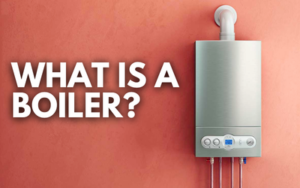Keeping your home warm and cozy during the winter months does not always have to equal a sky-high heating bill. Before you walk towards that thermostat and reach to turn up the heat, STOP and take a few of these ideas into consideration.
Adding insulation to key areas of your home is a great way to keep warm air enclosed. Prime locations where heat can easily escape include your basement ceiling, the exterior walls of your house, and the attic floor of your home.
- Did you know that the basement ceiling is also the floor of the first level of your home? Cold air can rise through the floorboards, dispersing itself throughout the rest of the lower story. That is one prime reason to install on the basement ceiling. To prevent cold air from invading your home, roll-in fiberglass insulation equipped with wings can be stapled into the floor supports
of your basement ceiling. - The exterior walls are another place where cold air can enter, and warm air can escape from your house. Blown-in insulation is the ideal type of insulate for your walls and can easily be
installed by the average homeowner. - It is also crucial that you insulate the attic floor of your home. The attic requires the same fiberglass insulation as the basement ceiling. If your attic floor is not properly insulated, there is a chance for icicles to develop at your house. Why does this happen? The icicles evolve because the heat escapes from the roof melting the snow that has accumulated there. This, in turn, drips off the gutters and re-freezes as icicles on the edge of your roof.
Two top locations for warm air to escape in the home are windows and doors. These areas not only allow cold air to enter the home, they make it possible for warm air to leave. Attaching weathering-stripping around the interior perimeter of your door can prevent both of these situations. Weathering-stripping is available in a variety of widths to properly fit your door and comes in adhesive-backed or tape. Also, by caulking windows, you are shutting several access points for obtaining unwelcome cold air and losing heat. Any visible cracks or holes should be sealed with silicone caulk. Silicone caulk is recommended because it is long-lasting, flexible, and it will not shrink or crack.
Consider installing double-glazed windows to keep heat inside of your home. With two panes of glass, these windows work by the air between the panes acting as an insulating boundary with the warm indoor air and the cold air outside. While these windows can be expensive, your heating bill savings will make up for the initial cost.
Installing removable window inserts over your interior windows is another way to hold heat inside of your home. Custom-made to fit over your windows, these inserts are made of a clear, lightweight polyvinyl film. One of the best things about window inserts is that they are detachable. They can be placed on top of your window in the wintertime, and then popped out when the summer months roll around.
On cold, sunless days, and at night, keep your shades pulled down to entirely cover the windows. This will provide insulation. You should purchase shades that are composed of a thicker, heavier material such as fabric instead of synthetic or thin fiber. Venetian blinds can also be an efficient method of insulation. However, the space between the slats can allow for more heat to be lost.
Make sure to seal miscellaneous heat leaks around your home. Electric switches and wall outlets can cause heat loss. There are pre-sized foam gaskets that are available at hardware stores that close off any gaps that are around wall fixtures. In addition, assure that the damper in your fireplace is closed when it is not being used. If your fireplace has glass doors in front of it, ensure that it is closed as well. An opened fireplace is an ideal place for hot air to escape.
We have a wide range of heating systems available at HeatSource. If you would like more information on our products or would like assistance with your current system, please give us a call. We are always on duty, 24/7! Contact us today!













